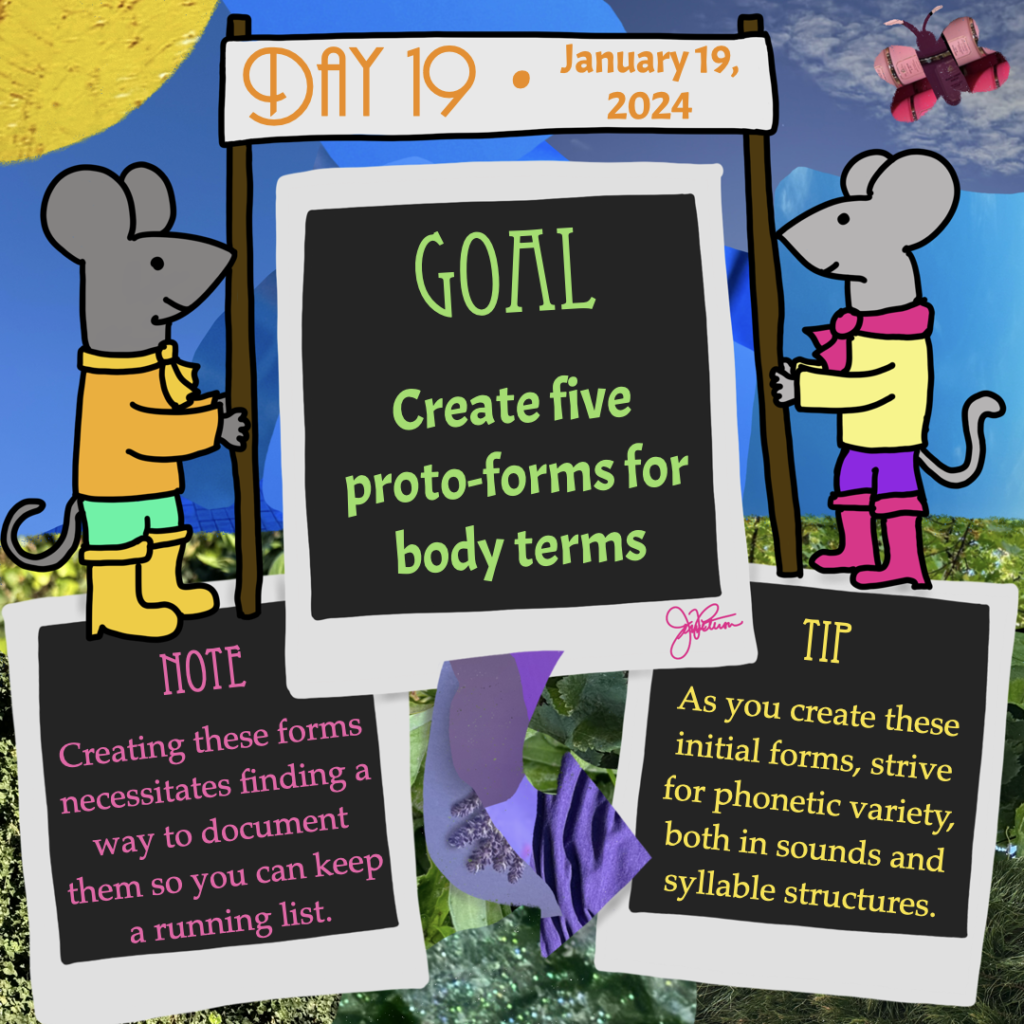
Goal: Create five proto-forms for body terms
Note: Creating these forms necessitates finding a way to document them so you can keep a running list.
Tip: As you create these initial forms, strive for phonetic variety, both in sounds and syllable structures.
Work focus: Create/Make/List
A question David and I frequently get asked is how we know what words to make and which of those words should be basic roots in the language. A basic root is a word that is so old in the language that it can be traced all the way back to the proto-stages. In other words, it will be represented by a root that you will create as a proto-form. Furthermore, a basic root consists of only one root. That is, it isn’t a compound and doesn’t have any affixes. The first words you will create in your language based on these prompts are basic roots.
These basic roots typically refer to the most fundamental, frequent, and salient bits of the world around the speakers during the proto-stages of the language. That last part is important: what surrounds your speakers in a modern environment may not have surrounded them when these proto-words were formed. So you need to think back to when your language was first forming—to the days of the first speakers of your language—and their world to make sure you’re assigning roots in a way that makes sense for your conworld.
Body parts of your speakers are a good place to start for creating basic roots. Body terms come in useful for creating strategies for grammaticalizing concepts (something we will get to later on), creating compounds, and creating idiomatic expressions.
Review the information you wrote (or drew) about your speakers and their physical forms and create at least five roots (i.e. proto-forms) to refer to their body parts. For example, if your speakers are bird people, you might consider making words that mean “beak, wing, eye, leg, talon.” However, if your speakers are merpeople, words like “fin, face, chest, tail, arm” might be your first body term words.
As you create these new forms, a piece of advice is to try to keep your roots on the smaller side (or at least most of your roots). Keeping them limited to one or two syllables will help later on when you might want to add other information to the root, such as multiple affixes to indicate number and case.
You can, of course, choose to use some of the nonce forms you came up with earlier this week and assign them to a meaning. They’ll no longer be nonce forms but proper roots.
